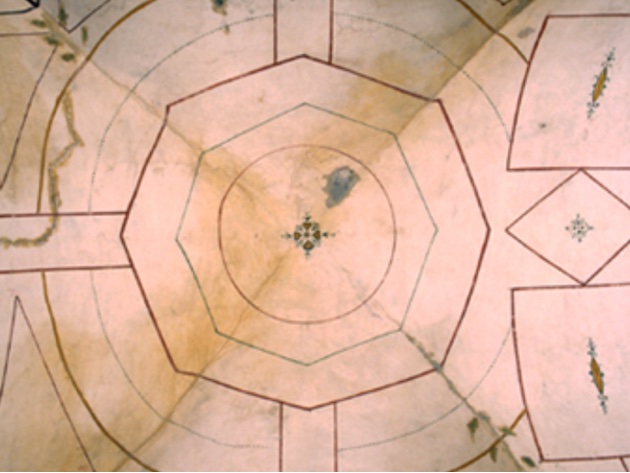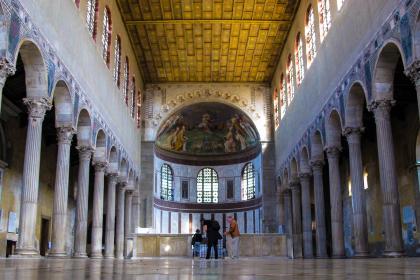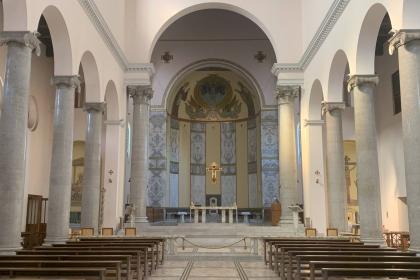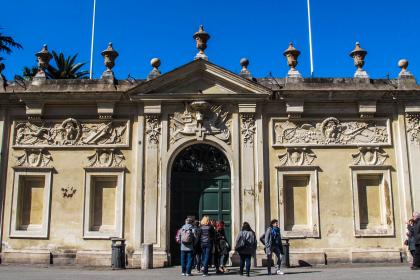
Built by the Emperor Decius (249-251 AD) in 249, the Decian Baths (in Latin Thermae Decianae) were a thermal complex built on the Aventine to serve the wealthy neighborhood that had developed here. Today the baths, the remains of which are located under the Piazza del Tempio di Diana and under the Casale Torlonia - and incorporated by the latter - were intended to serve the refined and wealthy clientele of the Aventine, unlike the neighboring Baths of Caracalla, more grandiose and monumental but intended for mass use by the inhabitants of the popular neighborhood of the XII regio.
The thermal plant was characterized by a symmetrical development of the rooms, arranged on the sides of a large central room (the frigidarium or tepidarium), as can be seen from a sixteenth-century drawing by Andrea Palladio. Restored by the sons of Constantine and again in 414 after the sack of Alaric, the baths were built using a previous domus as a foundation. What remains of these rooms is located more than 10 meters below street level; they have mosaic floors, with frescoed walls and ceilings: within linear panels with red and green stripes on a white background, small landscapes, theatrical masks, candelabras, flowers and other phytomorphic elements are depicted; note the image of a bird in flight with a cricket in its beak.
This building incorporated older structures with walls in almost reticulate work, still partially covered with paintings of the first Pompeian style, attributable to the 2nd century BC, which belonged to a private house of the late republic. Other rooms of the same complex were seen in the years 1867-72 in the Torlonia vineyard, during fortification works for the defense of the Aventine against Garibaldi.
It has been proposed to recognize in this group of buildings the Privata Traiani, that is, the domus of Trajan that the sources locate on the Aventine, identified by others with the remains under the church of Santa Prisca. It is probable, however, that the rich and sumptuous domus was part of the imperial patrimony, then partially incorporated by Decius in the construction of the baths.
Photo credits: Capitoline Superindentency
Basilica of Saint Sabina all'Aventino

 Condividi
Condividi
Sant'Anselmo all'Aventino

 Condividi
Condividi
Information
Not open to visitors
 Condividi
Condividi
Location
To find out about all accessibility services, visit the Rome accessible section.












































